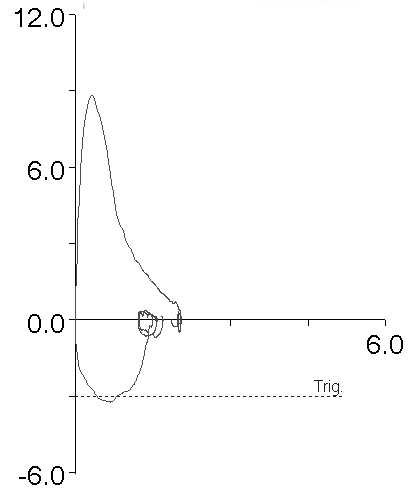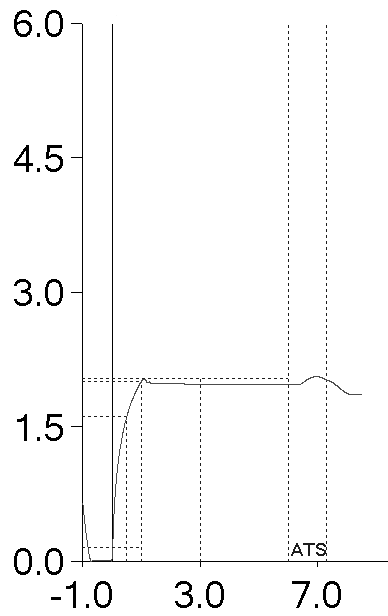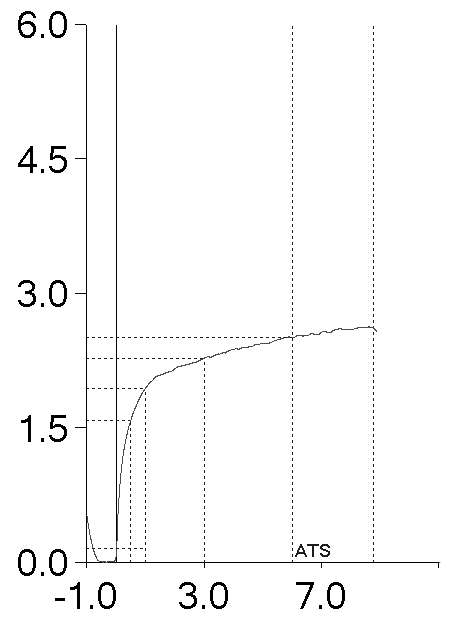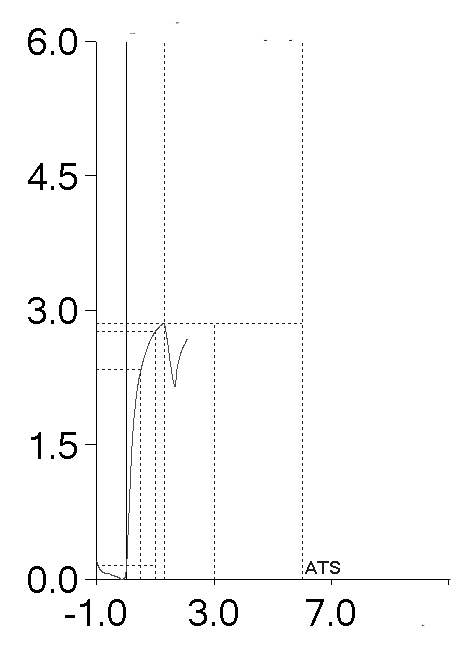The 2005 ATS/ERS spirometry standard make it permissible and even recommends that the FVC and FEV1 be selected from different efforts. I disagree somewhat with their criteria for selecting the FEV1 but overall reporting composite results makes a lot of sense. In an ideal world we’d always get the best FVC and FEV1 in a single effort but what we more often get is a good FEV1 with a poor FVC or a poor FEV1 with a good FVC. So, it best serves the clinical needs of the patient to report the best elements from multiple spirometry efforts.
However, I was disappointed that the 2017 ATS reporting standards did not in any way address how to indicate that composite results are being reported, nor does it resolve the selection of the flow-volume loops and volume-time curves that accompany the numerical results. That leaves it to us to decide how to do this but this in turn is often limited by the capabilities of our equipment’s software.
One test system that I routinely take to a free spirometry screening clinic will only report the three “best” efforts based solely on the largest combined FVC + FEV1. Admittedly, to some extent this follows the 2005 ATS/ERS spirometry standards selection criteria but other than deleting a specific test effort I cannot override these selections nor can I mix and match the FVC and FEV1 values. This means that what it reports as the “best” effort doesn’t always agree with what in reality are the best results.
My lab’s software however, allows us to select which test efforts the FVC and FEV1 come from. In addition we can select which test effort the ancillary measurements (Peak Flow, Expiratory Time, FIVC, FEF50, etc.) and which effort the flow-volume loop and volume-time graphs comes from.
It is therefore possible to select the FVC, FEV1, ancillary measurements and the graphs from entirely different test efforts. Thankfully, this almost never done but when I review reports what I see most frequently is that the FVC is selected from one test effort, but the FEV1, ancillary measurements and graphs are selected from another. To some extent this makes sense because I’d usually agree that the Peak Flow should always be associated with the FEV1, and if that’s the case, then so should the flow-volume loop. The problem with this is that the FVC often comes from a test effort with a substantially longer expiratory time and when results are selected this the volume-time curve and expiratory time are instead reported for the effort the FEV1 came from.
This leads to a report that look like this:
| Observed: | Predicted: | %Predicted: | |
| FVC: | 2.62 | 3.65 | 72% |
| FEV1: | 2.01 | 2.58 | 78% |
| FEV1/FVC: | 77 | 72 | 107% |
| Peak Flow: | 8.83 | 6.73 | 131% |
| Exp. Time: | 1.20 |
with graphs like:


At first glance these results are typical of restriction but anybody who reads this report and who knows anything about PFTs would see the short expiratory time and immediately suspect that the FVC is underestimated and the FEV1/FVC ratio overestimated, probably by a fair amount. For this reason, the test effort would probably be considered suboptimal and more likely to be masking underlying airway obstruction instead. However, because the expiratory time and the volume-time graph are coming from the effort with the highest FEV1 they are misleadingly low. If the proper expiratory time and volume-time curve were reported, it would look like this which goes a long way toward clearing up the confusion:
| Observed: | Predicted: | %Predicted: | |
| FVC: | 2.62 | 3.65 | 72% |
| FEV1: | 2.01 | 2.58 | 78% |
| FEV1/FVC: | 77 | 72 | 107% |
| Peak Flow: | 8.83 | 6.73 | 131% |
| Exp. Time: | 8.76 |

However, as I mentioned Peak Flow and Expiratory Time are part of the ancillary measurements and can’t be selected separately. The same applies to the flow-volume loop and the volume-time curve.
So when this happens I take a look at all of the patient’s test efforts. In this specific case, it just happened that the test effort with the largest FVC had a peak flow comparable to the test effort the largest FEV1 came from. That allowed me to select the ancillary measurements (Peak Flow and Expiratory Time) and a combined flow-volume loop and volume time curve that matched the reported results.
I’m not always so lucky. For example, this report has similar problems:
| Observed: | Predicted: | %Predicted: | |
| FVC: | 3.30 | 4.24 | 78% |
| FEV1: | 2.77 | 3.12 | 89% |
| FEV1/FVC: | 84 | 74 | 114% |
| Peak Flow: | 8.31 | 8.11 | 102% |
| Exp. Time: | 1.35 |


But all of the patient’s other test efforts had substantially lower Peak Flows, and even though the effort the FVC came from had the next best Peak Flow, the flow-volume loop looked substantially different:

In this case I pretty much had to leave the original report alone. If I could have selected the flow-volume loop and volume-time graphs separately and the Peak Flow and Expiratory Time separately, the report would have made a lot more sense.
When I review reports with problems I find that I can “fix” them about 1/3 of the time. So why bother even looking to fix reports in the first place when most of the time I can’t?
Our PFT reports tell a story. There’s no character development, no scenes and no particular plot, but it’s still a story. It’s important that the elements of the story support each other and have a coherent narrative. When the elements are at odds with each other then the story doesn’t make a lot of sense, even if the “real events” the story is taken from do.
I’d be able to tell the patient’s stories better if I could be more specific in what elements I could select from each test effort but there I’m limited by what our lab software allows me to do. It would also been helpful if the 2017 ATS reporting standards addressed the issue of reporting composite results since this is something we have to deal with every day.
I’d like the stories my lab tells to be coherent, believable and clinically relevant rather than something that appears to be a flight of fancy. That’s why it’s worth my time to try to re-work a report even when most of the time our lab’s software won’t let me.
So, what kind of stories are your lab’s reports telling?
References:
Brusasco V, Crapo R, Viegi G. ATS/ERS Task Force: Standardisation of lung function testing. Standardisation of spirometry. Eur Respir J 2005; 26: 319-338.
Culver B H et al. Recommendations for a standardized pulmonary function reports. An official American Thoracic Society technical statement. Am J Respir Crit Care Med 2017; 196(11): 1463-1472.